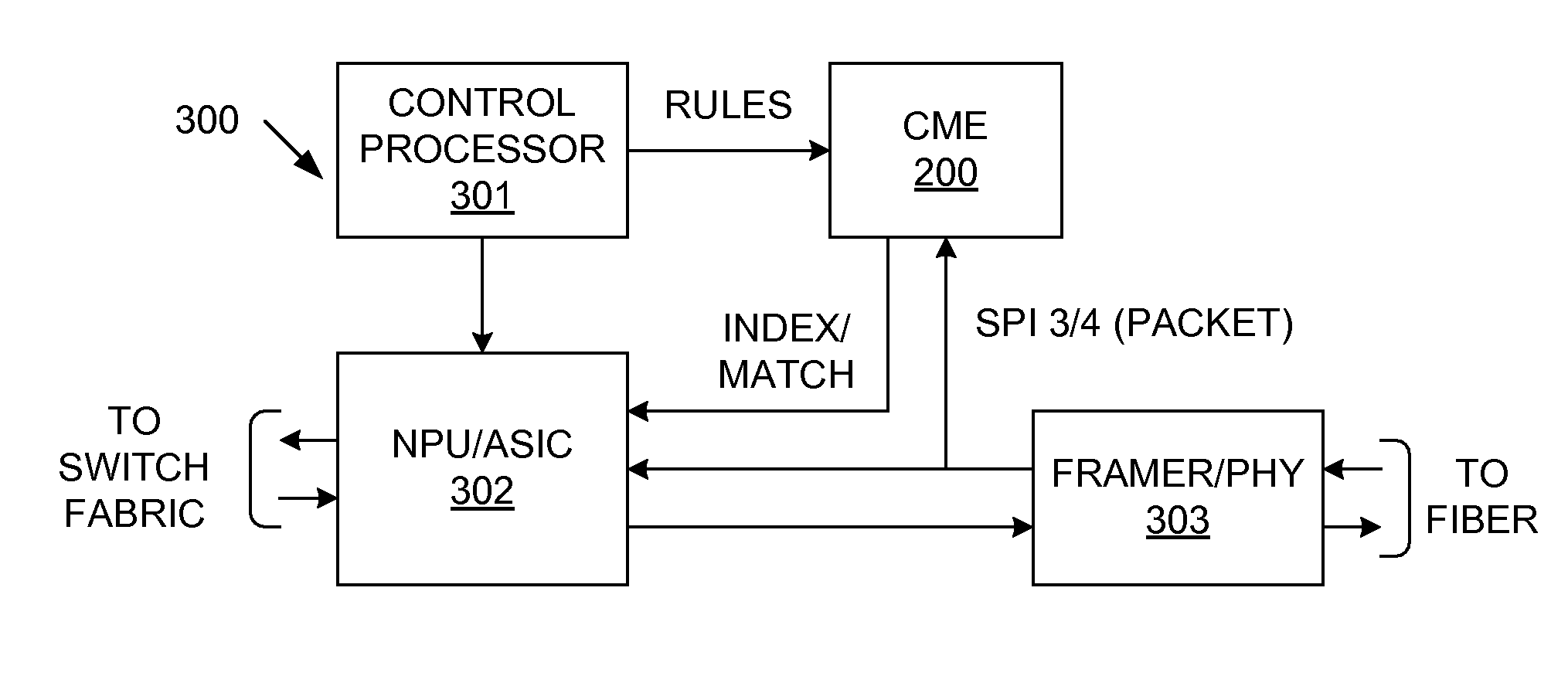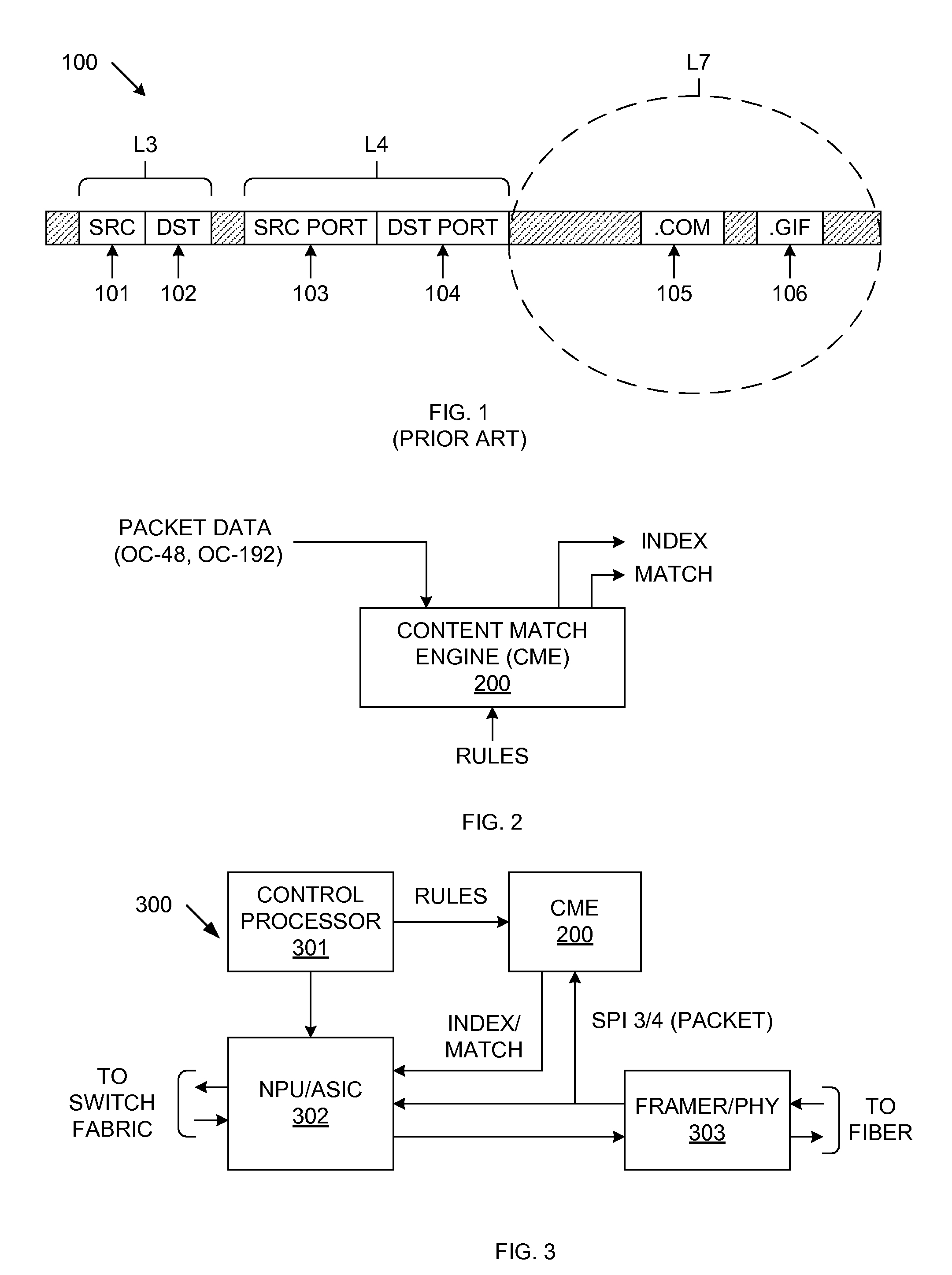Switching Circuit Implementing Variable String Matching
a variable string matching and switching circuit technology, applied in data switching networks, instruments, digital transmission, etc., can solve the problems of increasing the cost of power consumption, increasing the difficulty of switching packets at high speeds, and increasing the cost of multiple npus,
- Summary
- Abstract
- Description
- Claims
- Application Information
AI Technical Summary
Benefits of technology
Problems solved by technology
Method used
Image
Examples
Embodiment Construction
[0035]FIG. 2 is a block diagram of a content matching engine (CME) 200 in accordance with one embodiment of the present invention. CME 200 has an input port for receiving packet data at a 2.4 Gbps (OC-48) or a 10 Gbps rate (OC-192). CME 200 also has an input port for receiving a set of rules, which are stored in CME 200. CME 200 determines whether each incoming packet matches any of the rules. If CME 200 determines that a match exists, then CME 200 asserts a MATCH signal and provides an INDEX signal associated with the matched rule.
[0036]FIG. 3 is a block diagram of a system 300 that uses CME 200. In addition to CME 200, system 300 includes control processor 301, network processing unit (NPU) / ASIC 302 and framer / PHY 303. Control processor 301 loads the rules into CME 200. Control processor 301 also loads instructions into NPU / ASIC 302. These instructions define the manner in which NPU / ASIC 302 processes a received packet when the received packet matches one of the rules. Framer / PHY ...
PUM
 Login to View More
Login to View More Abstract
Description
Claims
Application Information
 Login to View More
Login to View More - R&D
- Intellectual Property
- Life Sciences
- Materials
- Tech Scout
- Unparalleled Data Quality
- Higher Quality Content
- 60% Fewer Hallucinations
Browse by: Latest US Patents, China's latest patents, Technical Efficacy Thesaurus, Application Domain, Technology Topic, Popular Technical Reports.
© 2025 PatSnap. All rights reserved.Legal|Privacy policy|Modern Slavery Act Transparency Statement|Sitemap|About US| Contact US: help@patsnap.com



